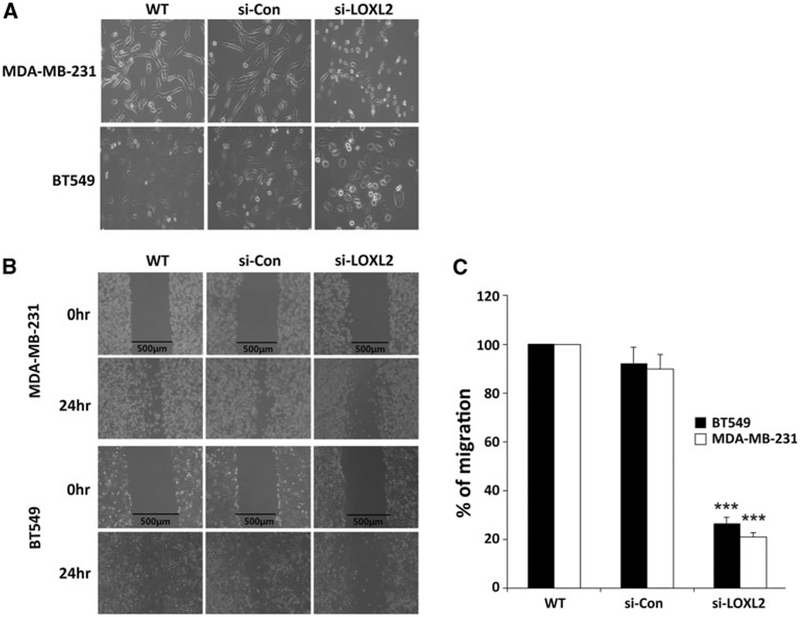Fig. 5.
Silencing of LOXL2 suppresses the invasive potential of human breast cancer cells. a MDA-MB-231-siLOXL2 and BT549-siLOXL2 cells exhibited a more epithelial phenotype compared to si-control and WT. b Motility of MDA-MB-231 (WT, si-Control, and si-LOXL2) and BT549 (WT, si-Control, and si-LOXL2) cells was examined by wound-healing assay. Wound-healing assay was performed three times. Images were taken at 24 h. c Invasion capacity of MDA-MB-231 (WT, si-Control, and si-LOXL2) and BT549 (WT, si-Control, and si-LOXL2) cells were analyzed by a Matrigel invasion assay. Migrated tumor cells were taken at 5 h and stained with H&E. Microphotographic images were captured at ×100 magnification using an Olympus IX70 inverted microscope and the number of invading cells was counted in five random high-power fields (***p < 0.001)

